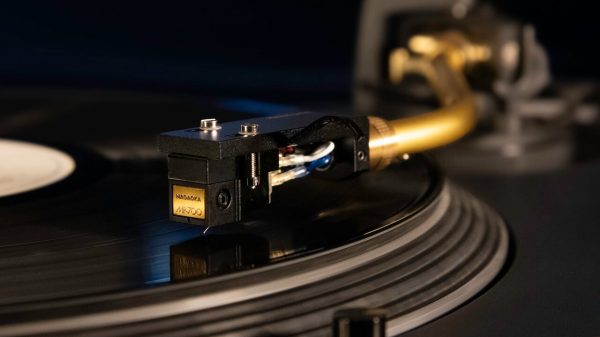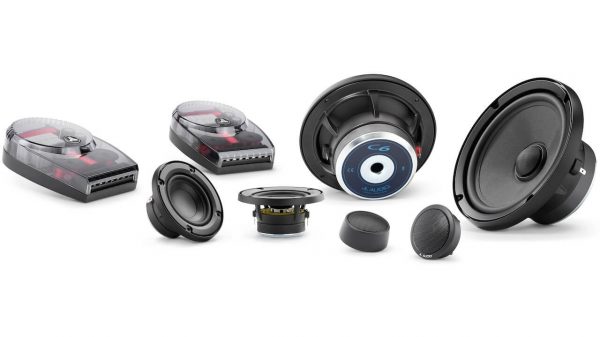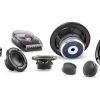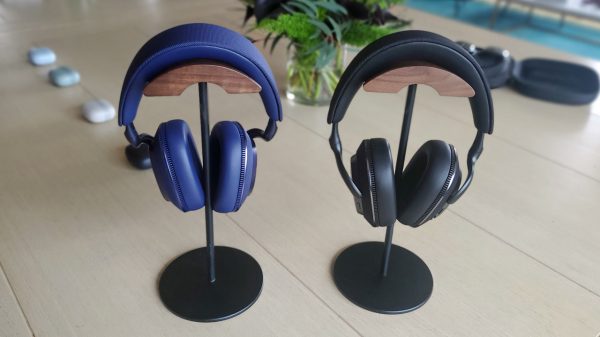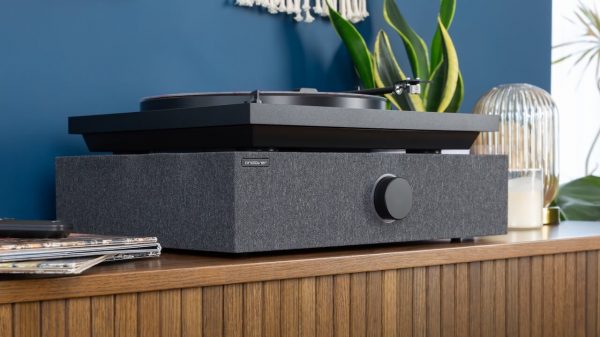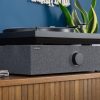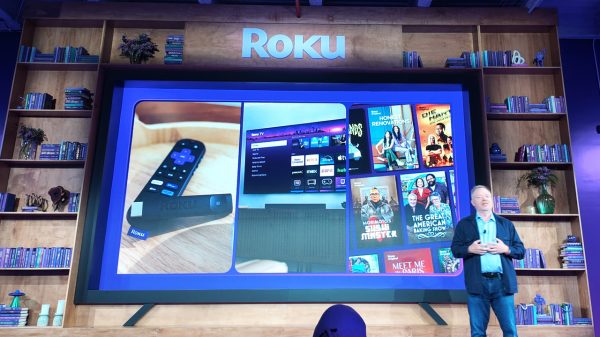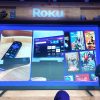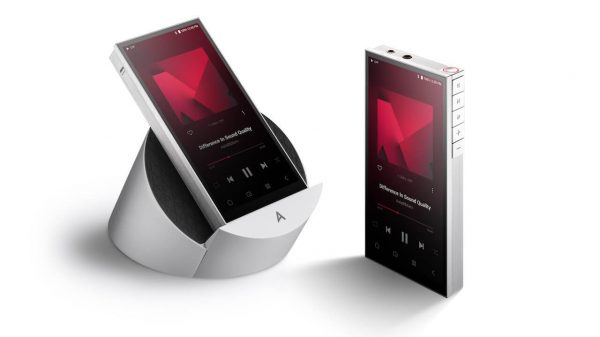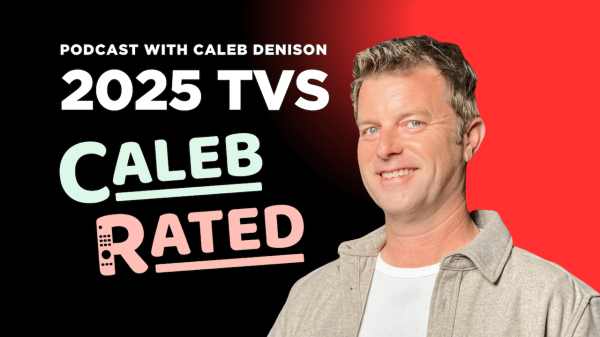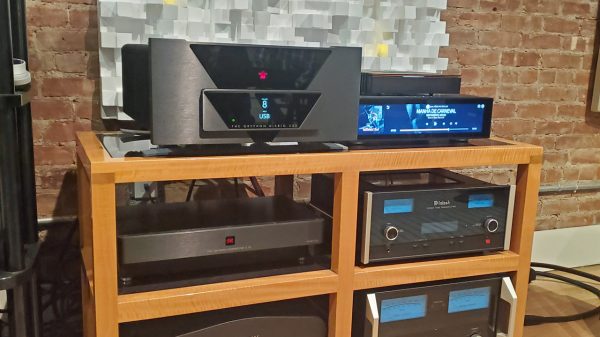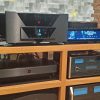Just when we thought the immersive surround sound format battle was cooling off, a new heavyweight has entered the ring. A partnership of organizations including Google, Arm, Samsung and the Alliance for Open Media (AOM) just announced a royalty-free alternative to Dolby Atmos and DTS:X immersive surround sound. It’s called Eclipsa Audio and it’s based on the open-source audio standard IAMF (Immersive Audio Model and Formats).
Similar to Dolby Atmos, Auro-3D, DTS:X and Sony 360 Reality Audio, Eclipsa Audio expands upon the traditional surround sound model with the addition of height information. With Eclipsa Audio-encoded content, sound can come from all around and above the listener. This enables a more enveloping and immersive listening experience with sound emanating from all three dimensions, just like in real life.
Compatible With Current TVs, Soundbars and Receivers… Mostly
Representatives from member companies and launch partners including Google, YouTube and THX gathered at a suite at the Wynn Hotel in Las Vegas during CES 2025 last week to demonstrate the new format. The reps explained that TVs and other devices will be able to decode this new immersive sound format using existing hardware, with just a software update required to the source device. And because the TV or source device is decoding the format to multi-channel PCM sound, many existing soundbars and receivers will be able to play back content in the new format. Simply connect the TV or source with Eclipsa decoding to a receiver or soundbar using an HDMI cable and you’re ready to rock.
One caveat with this approach is that the height channel information may not be available in the PCM stream. In a follow-up conversation with Google Product lead, Jani Huoponen, I confirmed this to be the case. As Jani stated, “Current HDMI 2.1 doesn’t have a robust way to signal height channels with PCM pass-through so typically the soundbar will get 5.1 or 7.1. I hope the new HDMI 2.2. spec will improve the situation.” So there is some compatibility with current gear but not full compatibility.
UPDATE (1/30/25): We followed up with Jani on the topic of lossless audio. Audio/videophiles generally prefer lossless audio for the highest performance. Some immersive audio formats such as DTS:X Profile 2 (DTS:X for Streaming) and MPEG-H only support lossy streaming, as they are optimized for streaming or broadcast. Other immersive sound formats such as Dolby Atmos, DTS:X Profile 1 and AURO-3D support lossless delivery so what you hear in your living room is a bit perfect copy of what was laid down in the studio.
Per Jani, Google Eclipsa does support lossless audio delivery via FLAC (Free Lossless Audio Codec). It will be up to the individual studios, content creators and streaming services whether to use lossless or lossy delivery. We expect that streaming services (including YouTube) will opt for lossy delivery, in order to save on bandwidth. But if Eclipsa makes it onto physical media like Blu-ray Disc or into a download service like Kaleidescape, we may (hopefully!) see lossless Eclipsa soundtracks.

The companies demonstrated the new format using TVs from TCL, LG and Samsung as well as soundbars from those same companies. Two of the soundbars they used were ones we have some experience with, the LG S95TR and TCL Q85H, plus the Samsung HW-Q990D (all 2024 models). The demo videos, which were played back on the YouTube app on the TVs, included K-Pop videos encoded in Eclipsa Audio as well as an updated version of the iconic “Deep Note” trailer from THX, also encoded in Eclipsa Audio.
The demos created a wide and enveloping soundstage with sound coming from all around the room. The rear channels on the TCL soundbar system were not very high in the mix, but this may have been an issue specific to that soundbar. The rear channels were much more active on the LG and Samsung soundbar systems. As the soundbars used reflective height channels, and the suite’s ceilings were rather high, it was not immediately clear whether sound was coming from the overhead channels. I suspect that it was not, due to the current limitations with PCM surround. But this limitation will be removed when new products come to market with Eclipsa Audio decoders built in.

As one of the co-developers and launch partners for Eclipsa Audio, Samsung has already announced that its 2025 line-up of TVs and soundbars will include native support for Eclipsa Audio. At the “Samsung First Look” event earlier in the week, we got to hear Eclipsa Audio content through the smaller of the two new bars, the HW-QS700F. Again, with reflective height speakers, the height information was not that pronounced, but the soundbar system at the First Look event did create a fully immersive listening experience. I’m looking forward to checking one or both of these new soundbars out for a full review once they become available.
A New Logo on Your Next Receiver or Soundbar?
While Samsung was first to announce that its 2025 TVs and soundbar products will include Eclipsa Audio support, we expect to see announcements from additional TV, receiver, mobile device and soundbar makers, who will likely add Eclipsa Audio decoding to their upcoming models as a competitive differentiator. The value proposition is particularly compelling since there are no royalty fees incurred. And, if you read between the lines, this “royalty free” aspect is probably what drove these companies to develop their own alternative to proprietary formats like Dolby Atmos and DTS:X, both of which require license fees in order to include them in your content, platform or hardware.
YouTube For The Win!
As mentioned, the videos we watched and listened to in the demos were all played back from YouTube. As a Google-owned platform, YouTube will be among the first streaming platforms to offer support for and content encoded in Eclipsa Audio. YouTube only gained support for the older Dolby AC3 5.1-channel surround format when that patent expired and entered the public domain in 2017. But Dolby Atmos is still protected by patent laws (in most countries) for several more years.
To have an alternative immersive audio platform should prove to be popular for content creators who want to bring immersive audio or spatial sound to their viewers and listeners. YouTube reps said they will work with content creators to help them get up and running creating content in the new format, and this should lead to the format proliferating on the platform quickly.
The Bottom Line
Competition is almost always a good thing. While we were initially skeptical, after hearing the format in action and seeing strong support across multiple high profile companies, we feel optimistic that Eclipsa Audio will succeed. The format will get a huge boost right out of the gate from YouTube where no other immersive or “three dimensional” surround format is supported.
With no license fees for encoding or decoding, we expect to see other equipment manufacturers, streaming services, movie studios, perhaps even record labels. adopt Eclipsa Audio as a supported format. The future of immersive audio is looking up.
Related Reading:


